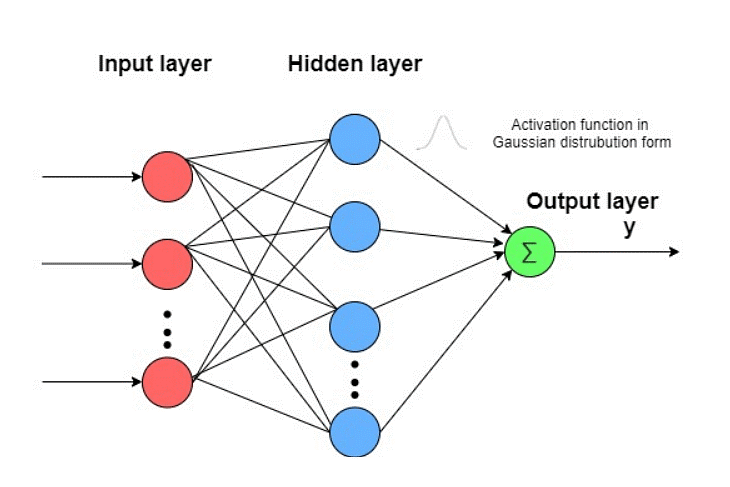Deep learning algorithms are a subset of machine learning models. They mimic the human brain to process data and create patterns.
Deep learning algorithms revolutionize how machines understand and interpret complex data. They use neural networks with multiple layers to analyze vast amounts of information, identifying intricate patterns and making precise predictions. These algorithms power various applications like image recognition, natural language processing, and autonomous driving.
They learn from large datasets, improving over time as they process more data. Their efficiency and accuracy make them invaluable in industries like healthcare, finance, and technology. Businesses leverage these algorithms to enhance decision-making, optimize operations, and drive innovation. Embracing deep learning unlocks new potentials in artificial intelligence, transforming how we interact with technology.

Credit: www.projectpro.io
What Is Deep Learning?
Deep learning algorithms are transforming various industries. Deep learning is a type of machine learning that teaches computers to learn from data. But what exactly is deep learning? Let’s dive in.
Definition
Deep learning is a subset of artificial intelligence and machine learning. It uses algorithms to model high-level patterns in data. Think of it as a way for computers to learn and make decisions.
Deep learning works with large amounts of data and complex neural networks. These networks mimic how the human brain works. Here’s a simple breakdown:
- Data Input: This is the information fed into the system.
- Neural Network: A series of algorithms that process this data.
- Output: The final result or prediction made by the system.
Deep learning can be used in various fields:
- Image Recognition: Identifying objects in images.
- Speech Recognition: Converting spoken words into text.
- Natural Language Processing: Understanding human language.
Deep learning is powerful because it can handle large, complex datasets. It can find patterns that humans might miss. This makes it valuable in many areas, from healthcare to finance.
Neural Networks
Neural networks are the backbone of deep learning. They consist of layers of nodes, or neurons, that process data.
Here’s a simple way to understand neural networks:
- Input Layer: This layer receives the initial data.
- Hidden Layers: These layers process the data through various nodes.
- Output Layer: This layer provides the final result.
Each node in a neural network is like a tiny brain cell. It takes input, processes it, and passes it on. The network learns by adjusting the connections between these nodes. This process is called training.
There are different types of neural networks:
- Convolutional Neural Networks (CNNs): Used for image processing.
- Recurrent Neural Networks (RNNs): Used for time-series data.
- Generative Adversarial Networks (GANs): Used for generating new data.
Neural networks can be simple or very complex. Their complexity depends on the problem they are designed to solve. They are a crucial part of what makes deep learning so effective.
Applications Of Deep Learning
Deep Learning Algorithms are revolutionizing the tech industry. They allow machines to learn from data in ways that mimic human learning. Applications of Deep Learning span many fields, enhancing how we interact with technology and information.
Computer Vision
Computer Vision is one of the most exciting applications of Deep Learning. It enables machines to interpret and make decisions based on visual inputs. This technology powers:
- Image Recognition: Identifying objects, people, and scenes in images.
- Facial Recognition: Recognizing faces for security and tagging people in photos.
- Medical Imaging: Detecting diseases in X-rays and MRIs.
- Self-Driving Cars: Interpreting road signs, obstacles, and lane markings.
Image Recognition is widely used in various apps and social media platforms. Facial Recognition helps in unlocking phones and ensuring security in sensitive areas. Medical Imaging allows doctors to diagnose diseases faster and more accurately. Self-Driving Cars rely on computer vision to navigate safely.
Here’s a simple table showing some popular applications:
| Application | Use Case |
|---|---|
| Image Recognition | Tagging friends in photos |
| Facial Recognition | Unlocking smartphones |
| Medical Imaging | Detecting tumors in scans |
| Self-Driving Cars | Navigating roads safely |
Natural Language Processing
Natural Language Processing (NLP) helps machines understand and respond to human language. This technology is essential for:
- Language Translation: Converting text from one language to another.
- Chatbots and Virtual Assistants: Answering questions and providing support.
- Sentiment Analysis: Understanding emotions in text, like reviews and social media posts.
- Text Summarization: Creating short summaries of long articles or documents.
Language Translation tools like Google Translate have made communication easier across different languages. Chatbots and Virtual Assistants like Siri and Alexa help users with daily tasks. Sentiment Analysis helps companies understand customer feedback. Text Summarization saves time by providing concise information.
Consider this table showcasing key NLP applications:
| Application | Use Case |
|---|---|
| Language Translation | Breaking language barriers |
| Chatbots | Customer service support |
| Sentiment Analysis | Understanding customer reviews |
| Text Summarization | Condensing articles |
Speech Recognition
Speech Recognition technology converts spoken words into text. It has transformed how we interact with devices and services. Key applications include:
- Voice Assistants: Controlling devices and getting information through voice commands.
- Transcription Services: Converting spoken content into written text.
- Accessibility Tools: Helping people with disabilities use technology.
- Voice Search: Searching the web using voice commands.
Voice Assistants like Siri, Alexa, and Google Assistant make everyday tasks easier. Transcription Services are valuable in legal, medical, and educational fields. Accessibility Tools enable people with disabilities to use computers and phones. Voice Search makes finding information faster and more convenient.
Here is a table summarizing key uses of Speech Recognition:
| Application | Use Case |
|---|---|
| Voice Assistants | Performing tasks via voice commands |
| Transcription Services | Converting speech to text |
| Accessibility Tools | Helping people with disabilities |
| Voice Search | Searching online using voice |
Types Of Deep Learning Algorithms
Deep learning algorithms have revolutionized the field of artificial intelligence. These algorithms enable machines to learn from vast amounts of data, making them capable of performing complex tasks. There are various types of deep learning algorithms, each suited for specific applications. This blog post delves into some of the most important types: Convolutional Neural Networks, Recurrent Neural Networks, and Generative Adversarial Networks.
Convolutional Neural Networks
Convolutional Neural Networks (CNNs) are designed to process and analyze visual data. They are widely used in image and video recognition tasks. CNNs consist of multiple layers, each responsible for extracting different features from the input image.
Key features of CNNs include:
- Convolutional Layers: These layers apply filters to the input image to create feature maps.
- Pooling Layers: These layers reduce the dimensionality of the feature maps, making the computation more efficient.
- Fully Connected Layers: These layers perform high-level reasoning and classification based on the features extracted by the convolutional and pooling layers.
Here is a simplified structure of a CNN:
| Layer Type | Function |
|---|---|
| Convolutional Layer | Extracts features from the input image |
| Pooling Layer | Reduces dimensionality |
| Fully Connected Layer | Classifies the image based on extracted features |
Recurrent Neural Networks
Recurrent Neural Networks (RNNs) are specialized for sequential data. They are extensively used in tasks such as language modeling, speech recognition, and time-series prediction. RNNs have loops in their architecture, allowing them to maintain information about previous inputs.
Key features of RNNs include:
- Hidden States: These states store information about previous inputs, enabling the network to consider context.
- Recurrent Connections: These connections allow the network to pass information from one time step to the next.
- Sequence Output: RNNs can produce a sequence of outputs, making them suitable for tasks like text generation.
Here is a comparison table for RNNs:
| Feature | Description |
|---|---|
| Hidden States | Stores past information |
| Recurrent Connections | Passes information through time steps |
| Sequence Output | Produces sequential data output |
Generative Adversarial Networks
Generative Adversarial Networks (GANs) are known for their ability to generate new, synthetic data. They consist of two neural networks: a generator and a discriminator. These networks compete against each other to improve the quality of the generated data.
Key features of GANs include:
- Generator Network: This network generates synthetic data.
- Discriminator Network: This network evaluates the authenticity of the generated data.
- Adversarial Training: The generator and discriminator train against each other, improving the generated data over time.
Here is a comparison table for GANs:
| Component | Function |
|---|---|
| Generator | Produces synthetic data |
| Discriminator | Evaluates data authenticity |
| Adversarial Training | Improves data quality through competition |
How Deep Learning Works
Deep Learning Algorithms mimic the human brain to process data and create patterns for decision-making. How Deep Learning Works is a fascinating topic that delves into the intricacies of this advanced technology. Deep learning uses neural networks with many layers to analyze various types of data. Let’s explore the key elements that make deep learning effective.
Training Process
The training process in deep learning involves teaching the model to make accurate predictions. This starts with feeding the neural network a large dataset. The network adjusts its parameters based on the data to minimize errors.
Here’s a step-by-step breakdown:
- Data Collection: Gather a large and diverse dataset.
- Data Preprocessing: Clean and format the data.
- Initialization: Set initial weights and biases.
- Forward Propagation: Pass data through the network to generate predictions.
- Loss Calculation: Measure the difference between predictions and actual values.
- Backward Propagation: Adjust weights to reduce loss.
- Iteration: Repeat the process until the model is accurate.
During training, the model learns to recognize patterns. Each iteration helps the model improve its accuracy. The goal is to minimize the loss function, which measures prediction errors. This iterative process continues until the model achieves optimal performance.
Backpropagation
Backpropagation is a critical component of deep learning. It helps the model learn from errors by adjusting weights in the network. This method uses the gradient descent algorithm to minimize the loss function.
Steps involved in backpropagation:
- Forward Pass: Calculate the output of the neural network.
- Compute Loss: Measure the error between predicted and actual values.
- Calculate Gradients: Determine the gradient of the loss function with respect to each weight.
- Update Weights: Adjust weights using the calculated gradients.
- Repeat: Iterate the process until the loss is minimized.
Backpropagation ensures that the model learns efficiently. It distributes the error back through the network, updating each layer’s weights. This process is essential for training deep neural networks and improving their accuracy.
Activation Functions
Activation functions play a crucial role in deep learning. They determine whether a neuron should be activated or not. This decision helps the network capture complex patterns in the data.
Common activation functions include:
- Sigmoid: Outputs a value between 0 and 1. It is used in binary classification tasks.
- Tanh: Outputs a value between -1 and 1. It is effective for zero-centered data.
- ReLU (Rectified Linear Unit): Outputs zero if the input is negative; otherwise, it outputs the input value. It is widely used in deep learning models.
- Leaky ReLU: Similar to ReLU but allows a small, non-zero gradient when the input is negative.
- Softmax: Converts the output into a probability distribution. It is used in multi-class classification tasks.
Activation functions introduce non-linearity into the network. This allows the model to learn and represent complex data. They are vital for the network’s ability to solve intricate problems and make accurate predictions.
Advantages Of Deep Learning
Deep Learning Algorithms are transforming various industries with their advanced capabilities. These algorithms mimic the human brain and learn from vast amounts of data. Let’s explore the advantages of Deep Learning, which make it a powerful tool in technology and data analysis.
High Accuracy
One of the main advantages of Deep Learning is its high accuracy. Deep Learning models can achieve accuracy levels that surpass traditional machine learning methods.
- Deep Learning models excel in tasks such as image recognition, speech recognition, and natural language processing.
- They can identify patterns in data with remarkable precision.
- These models continue to improve as they are exposed to more data.
For instance, in medical imaging, Deep Learning algorithms help in the early detection of diseases. They analyze X-rays and MRI scans with greater accuracy than human doctors. This early detection can save lives.
| Application | Accuracy Improvement |
|---|---|
| Image Recognition | Over 95% |
| Speech Recognition | Up to 99% |
| Natural Language Processing | Over 90% |
High accuracy makes Deep Learning indispensable in many fields, from healthcare to finance.
Ability To Learn From Unstructured Data
Deep Learning’s ability to learn from unstructured data sets it apart. Traditional algorithms struggle with unstructured data, but Deep Learning thrives on it.
Unstructured data includes:
- Text
- Images
- Audio
- Video
Deep Learning models analyze this data to extract meaningful insights. For example, they can understand sentiment from social media posts or identify objects in photos.
Consider the following types of unstructured data and how Deep Learning handles them:
| Type of Data | Deep Learning Application |
|---|---|
| Text | Sentiment Analysis |
| Images | Object Detection |
| Audio | Speech Recognition |
| Video | Activity Recognition |
The ability to process and learn from unstructured data makes Deep Learning highly versatile and effective in real-world applications.
Credit: www.analyticsvidhya.com
Challenges In Deep Learning
Deep learning algorithms have revolutionized various fields, including image recognition, natural language processing, and autonomous driving. These algorithms, modeled after the human brain, are powerful but come with their own set of challenges. Understanding these challenges is crucial for anyone diving into the world of deep learning.
Data Requirements
One of the biggest challenges in deep learning is the enormous amount of data required to train models. Deep learning models need thousands or even millions of data points to perform accurately.
Here are some key points to consider:
- High-Quality Data: The data must be accurate and relevant. Poor quality data can lead to poor performance.
- Data Diversity: The training data should cover all possible scenarios the model might face.
- Data Labeling: Labeling large datasets is labor-intensive and expensive.
Let’s look at a table that summarizes the data requirements:
| Requirement | Importance | Challenges |
|---|---|---|
| High-Quality Data | Critical | Ensuring accuracy and relevance |
| Data Diversity | High | Covering all possible scenarios |
| Data Labeling | High | Labor-intensive and costly |
Computational Power
Deep learning algorithms demand substantial computational power. These algorithms perform millions of calculations per second, requiring robust hardware.
Here are some considerations:
- GPUs and TPUs: Graphics Processing Units (GPUs) and Tensor Processing Units (TPUs) are essential for faster computation.
- Energy Consumption: High computational power leads to significant energy consumption.
- Cost: Investing in powerful hardware can be expensive.
Below is a summary table:
| Requirement | Importance | Challenges |
|---|---|---|
| GPUs and TPUs | Essential | High cost and availability |
| Energy Consumption | High | Environmental impact |
| Cost | High | Significant investment required |
Interpretability
Interpretability is a significant issue in deep learning. These models are often seen as black boxes, making it difficult to understand how they make decisions.
Key points to consider:
- Lack of Transparency: Understanding the inner workings of the model is challenging.
- Trust: Hard to trust a model when you can’t explain its decisions.
- Regulation: Some industries require explanations for decisions made by AI.
Here’s a table that outlines these challenges:
| Issue | Importance | Challenges |
|---|---|---|
| Lack of Transparency | Critical | Understanding the model’s process |
| Trust | High | Building confidence in the model |
| Regulation | High | Meeting industry standards |
Future Of Deep Learning
Deep learning algorithms are transforming the world of technology. Their applications span across various fields such as healthcare, finance, and entertainment. The future of deep learning holds immense potential. Advancements in this field promise to revolutionize the way we interact with technology. This blog post explores the anticipated future developments in deep learning.
Continued Advancements
Deep learning continues to evolve at a rapid pace. Researchers and developers are constantly pushing the boundaries. Here are some key areas where we expect significant advancements:
- Model Efficiency: Future deep learning models will be more efficient. They will require less computational power and be faster.
- Enhanced Accuracy: Accuracy of predictions will improve. This will make deep learning applications more reliable.
- Scalability: Models will be able to handle larger datasets. This will enable more complex tasks to be managed with ease.
- Transfer Learning: Transfer learning will become more prevalent. Models will learn from fewer examples, speeding up the training process.
Below is a table summarizing the expected advancements:
| Area | Expected Advancement |
|---|---|
| Model Efficiency | Less computational power and faster performance |
| Accuracy | Improved prediction accuracy |
| Scalability | Handling larger datasets effortlessly |
| Transfer Learning | Faster training from fewer examples |
These advancements will make deep learning more accessible. They will also open up new possibilities in various industries.
Integration With Other Technologies
The future of deep learning includes its integration with other technologies. This combination will enhance the capabilities of both. Here are some ways deep learning will integrate with other technologies:
- Internet of Things (IoT): Deep learning will analyze data from IoT devices. This will lead to smarter homes and cities.
- Blockchain: Integrating deep learning with blockchain will improve security. It will also enhance data privacy.
- Virtual Reality (VR) and Augmented Reality (AR): Deep learning will create more immersive experiences in VR and AR.
- Edge Computing: Combining deep learning with edge computing will reduce latency. It will make real-time processing possible.
Below is a table summarizing the integration possibilities:
| Technology | Integration Benefit |
|---|---|
| IoT | Smarter homes and cities |
| Blockchain | Improved security and data privacy |
| VR and AR | More immersive experiences |
| Edge Computing | Real-time processing and reduced latency |
This integration will lead to more innovative applications. It will also make everyday technology smarter and more efficient.
Credit: www.simplilearn.com
Frequently Asked Questions
What Are Deep Learning Algorithms?
Deep learning algorithms are a subset of machine learning. They use neural networks to model complex patterns and data structures. These algorithms excel in tasks like image recognition, natural language processing, and speech recognition. They improve as they process more data, making them powerful for large-scale data analysis.
What Are The Three Types Of Deep Learning?
The three types of deep learning are supervised learning, unsupervised learning, and reinforcement learning. Supervised learning uses labeled data, unsupervised learning uses unlabeled data, and reinforcement learning uses rewards and punishments for training. Each type serves different purposes in various applications.
Is Cnn A Deep Learning Technique?
Yes, CNN is a deep learning technique. It stands for Convolutional Neural Network and excels in image recognition tasks.
What Are The Four 4 Types Of Machine Learning Algorithms?
The four types of machine learning algorithms are supervised learning, unsupervised learning, semi-supervised learning, and reinforcement learning.
Conclusion
Deep learning algorithms are transforming industries. They offer powerful solutions for complex problems. Businesses can harness these algorithms for better decision-making. Staying updated with advancements is crucial. Embracing deep learning can lead to innovation and growth. Explore its potential to remain competitive in the evolving tech landscape.







